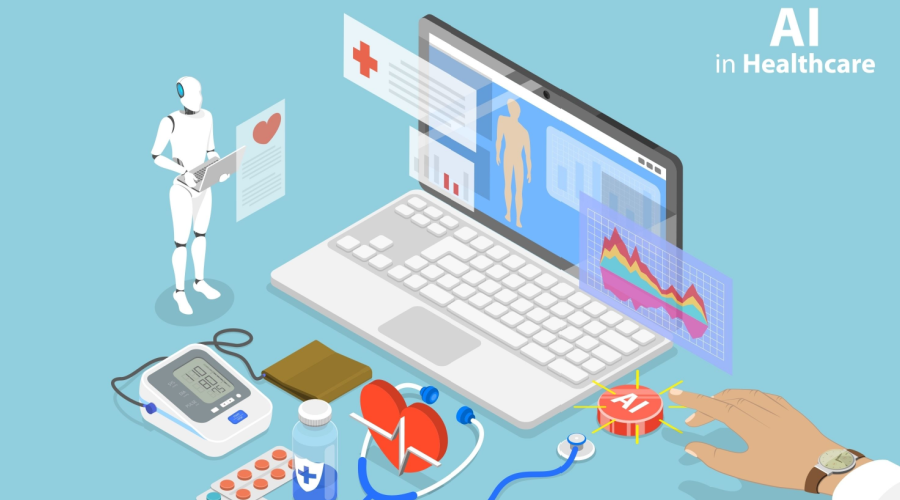You can’t easily measure the effects of human interaction, so it’s easy to overlook it as a way to boost revenue. Too much time socializing may even be viewed by some as a detriment to the bottom line.
From a numbers perspective, meaningful interaction with patients steals precious time and energy from quantifiable revenue-building activities, like filling scripts and optimizing purchasing.
“Your ROI is based on sales and numbers. How many scripts did you fill today? What are your profits? All of this is data-driven,” said Brittany Benson, manufacturer research specialist at Hamacher Resource Group (HRG), a leading partner in category management, business strategy and marketing services focused on consumer health care at retail. “Sometimes those data-driven tasks end up driving decisions instead of other, more intangible, factors that are important to you and your patients.”
For independent community pharmacies, great human interaction is a key ingredient to financial success. Human interaction builds relationships, which leads to loyalty and retention. “People go to independent pharmacies because of the relationship they have with the staff there,” Benson said. “Independents get to know the customers better, build trust, and that’s what pulls those customers back.”
Megan Moyer, senior marketing communications specialist at HRG, adds that human interaction not only leads to retention but also generates new customers and sales. “It could lead to great word-of-mouth, which means you’re going to expand your business,” she said.
And, the financial benefits extend beyond current patients. “Think about the generational sales of their family,” said Sean Grudzinski, product research and analysis manager at HRG. “You’re talking about not just helping and providing solutions for that patient but also providing those same services and solutions for their kids and their kids. And that is definitely unique.”
More than a boost to your bottom line, human interaction improves patients’ health by providing a support system they can count on. “The independent pharmacy could be the only place they’re receiving support in their health care journey. And it could be a blessing to them to have someone showing they care,” Benson said.
And that interaction builds a more holistic brand for the pharmacy. “It’s that perception of the pharmacy as being the place where you go to be cared for,” Moyer said, “and that they’re a partner in wellness.”
Making interactions personal
Great human interaction isn’t simply placing bodies on the pharmacy floor to direct patients to the right aisles or to the pharmacy counter. It’s behavior that treats patients as valuable people whose well-being matters. “It’s those human elements of what it means to think about another person and figure out how you can best serve them that day,” Benson said.
Human elements like compassion, understanding, awareness, listening and observing are how you show patients respect. These manifest even in small ways. For example, showing respect to a patient by being honest and upfront about a wait time. “Even if the pharmacist can’t meet the patient’s need at the moment, they can offer them that human acknowledgment of, I see you, you’re important, and I’m sorry but it’s going to take this long before we can address your need,” Benson said.
Creating better human interaction
It’s easy to talk about creating better human interaction, but practicing it is another thing. Engaging with people doesn’t always come naturally, and it’s often not top-of-mind.
Benson said to start by making it a priority. Once human interaction is your pharmacy’s main focus, it becomes the lens through which you see every facet of your business and “something you’ll consider when making all your decisions.”
Cohesion is another necessary element. “When you have a cohesive team, you have the support system in place and everyone can focus on their own strengths,” Benson said. “You can free the pharmacist to do what they’re great at and what they need to be doing for the patient.”
But for the best human interaction, the team needs to be well-trained. A team with training in communication will have the ability and confidence to interact with any patient who comes into the pharmacy. They’ll be prepared for whatever situation a patient brings and can navigate sensitive issues.
“Every employee’s interactions with a patient are a direct reflection of you and the store. Creating consistency through training will further enhance your brand,” Grudzinski said.
Navigating sensitive topics
Health is a sensitive business. Some patients prefer privacy. Others want to speak but are too shy or embarrassed. Effective human interaction creates safe opportunities for patients to speak and respects the privacy of those who don’t.
Much of the time, determining what the patient in front of you wants requires communication beyond speech— the nonverbal communication, Benson said. People’s expressions and body language can say a lot.
But the only way to notice those details is by switching from task mode to patient mode.
“You have to be able to care about the patient more than your own feelings,” Benson said. “Sometimes you have to switch your modes mentally from ‘I’m doing scripts’ to patient mode and think about what you need to do differently when interacting with a patient.”
Whether patients are shy or don’t want any interaction, taking the time to look at them and listen is key to meeting their needs.
“Give them your full attention, look them in the eye, and provide them the opportunity to share,” Moyer said. Benson added, “It’s amazing what people start to share when you stop talking.”
This works even for reserved patients because it fosters a welcoming and caring environment. “You can’t be everything to everyone,” Benson said, “but you can control the type of environment you want your pharmacy to have.”
Finding time for more
In a pharmacy, busyness is the norm. When work responsibilities pile up, it’s easy to forget to prioritize human interaction.
“Sometimes the stress of everything can build up,” Benson said. “If you’re mindful of how it’s affecting you or how it can be affecting your patients, you can figure out how to switch your focus back to your main priority for the day, which is offering great health care and great interactions with everyone who comes into your store.”
Delegation may be the best cure for busyness.
“Pharmacists should give ownership to others within their business to, say, manage their front end, their purchasing or their assortment,” Grudzinski said. “The reality is they can’t do it all, and when they try to, customer interaction may suffer.”
Moyer suggests getting creative and fostering human interaction outside of normal business hours. For example, offer educational seminars on health and wellness topics. Or, host an open house where you walk people around the store and show them your unique products and services. “If they make a commitment to these types of events, where they’re focused on interaction with patients, it can make up for the inability to make those connections during a typical work day,” Moyer said.
Ultimately, if the pharmacist prioritizes human interaction and creates a cohesive team, Benson said, the staff will naturally carve out time during the day for quality human interaction amidst other tasks.
3 Easy Ways to Improve Interaction
Making your patients feel cared for doesn’t require grand gestures. Give these three simple interactions a try.
1. See patients, not customers
Bringing human elements to human interaction begins with your perception, said Sean Grudzinski, product research and analysis manager at Hamacher Resource Group.
It starts with simply seeing customers as patients.
2. Ditch the counter
“One of the best ways to improve human interaction is to get out from behind the counter,” Grudzinski said. “Talk to your patients whenever you can. Make it a priority and part of your daily routine.”
3. Know your patients by name
“Learn their names and recognize them by name,” he said. “That’s one of the first things to do. You should know almost everybody’s name coming into the pharmacy. That goes a long way to improving human interaction.”
Want more business tips like these? Sign up for our weekly e-newsletter.












